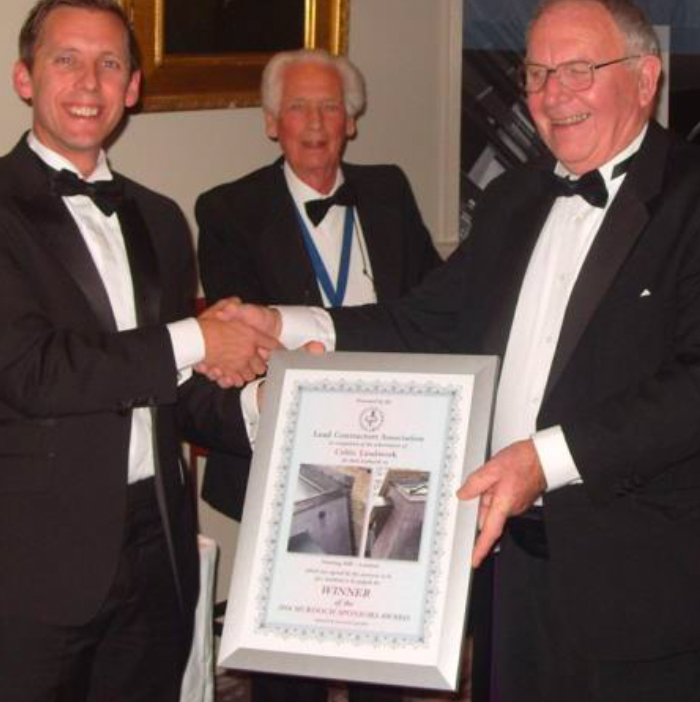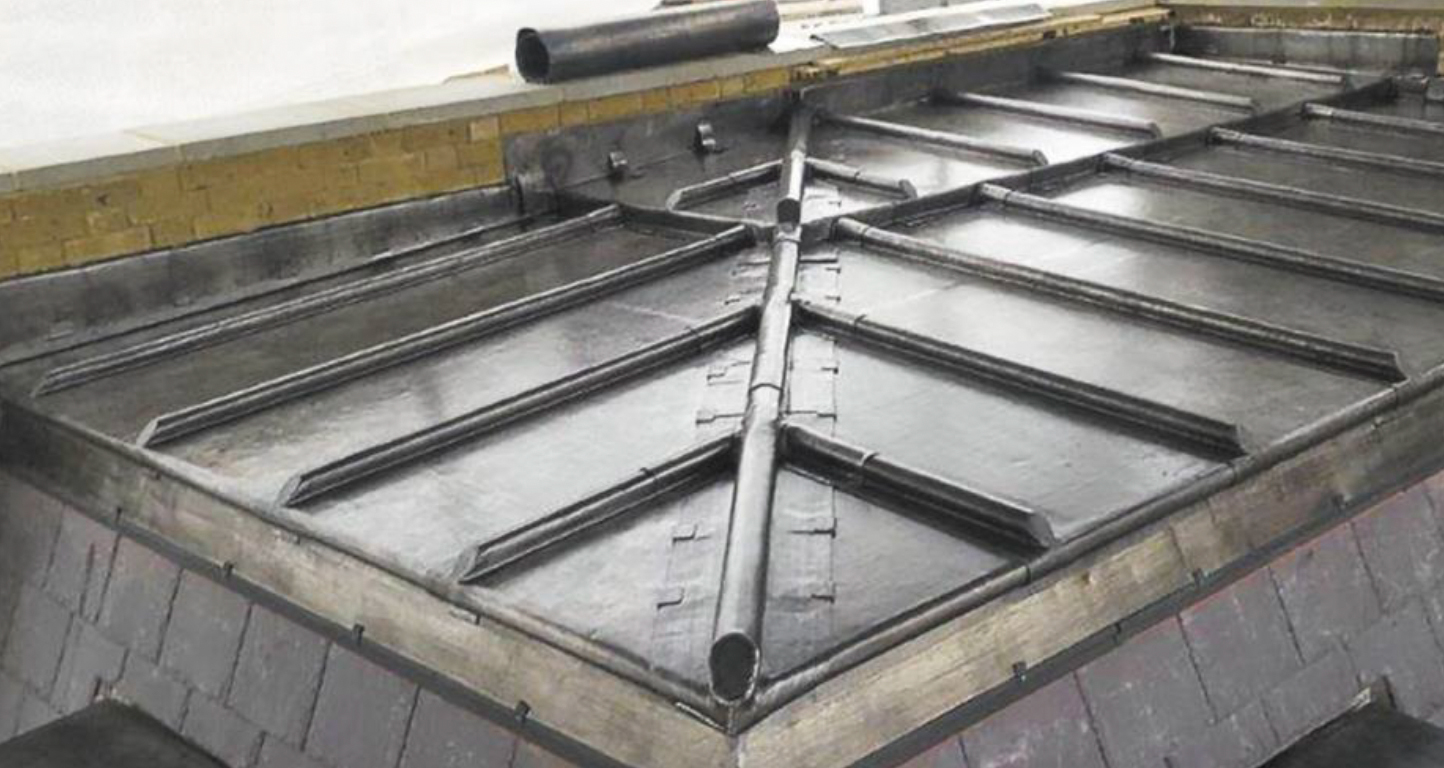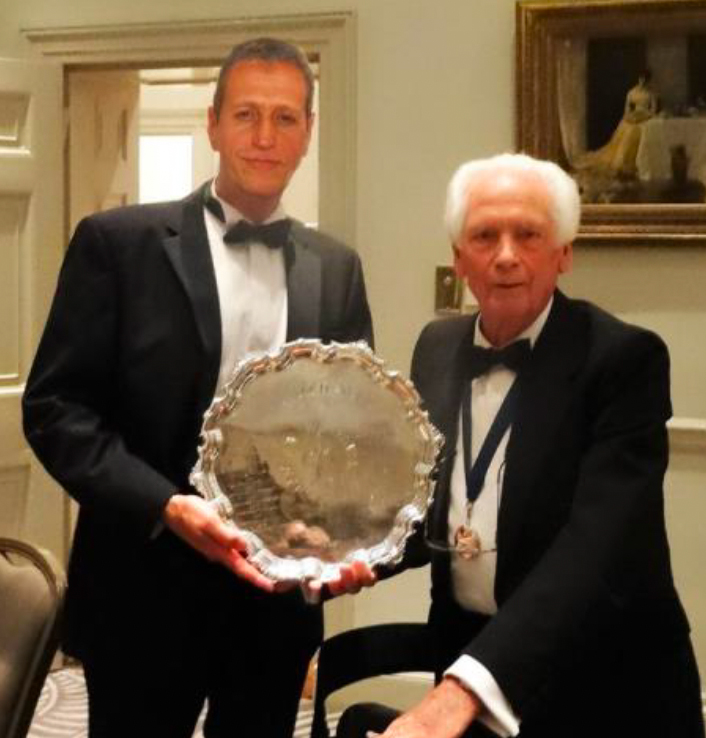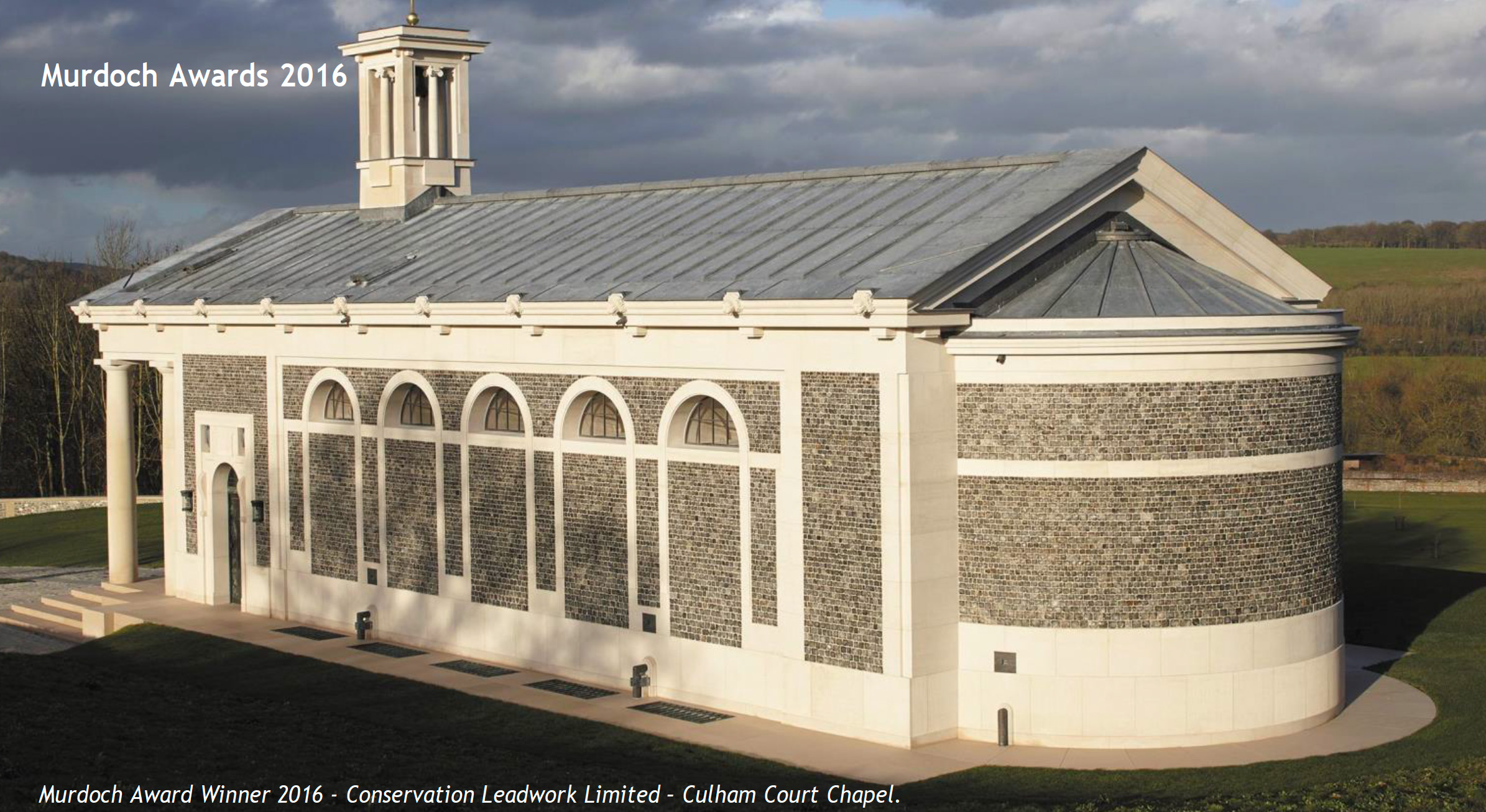FIRST TIME WINNERS FOR MURDOCH AWARDS
It is always deeply satisfying for any craftsman when they know they have done a good job. Of course the client is happy with the finished work, but more often than not their appreciation can only be skin deep, viewing the quality of the finished surface appearance, with no real knowledge of the effort and skill that has resulted in such perfection.
So the real accolade for the craftsman comes when their peers in the industry recognise a job well done and as far as the specialist leadworker is concerned, the ultimate accolade comes with the announcement of the winners of the annual Murdoch Awards.
At the beginning of October members and associates of the Lead Contractors Association gathered at the Rudding Park Hotel in Harrogate to celebrate the 2016 Murdoch Award and Murdoch Sponsors Award competitions.
Twenty years ago the first Murdoch Award was presented in honour of Dick Murdoch on his retirement following his long crusade to raise quality standards in working with lead sheet, part of which led to the founding the Lead Contractors Association in 1984.
Ten years after the Murdoch Award was first presented, the Murdoch Sponsors Award was introduced, featuring the smaller installations that used less than 5 tonnes of lead sheet, but which could be equally as demanding of the lead worker’s skills as the larger, more eye catching projects.
The two awards bear ongoing testimony to the specialist craft of working with lead sheet and the latest award winners certainly lived up to the standards of their predecessors. However in stepping up to announce the winners at Rudding Park, Dick Murdoch (who is still going strong and chairs the judging panel for the awards) was not going to miss the opportunity to berate those in the audience who thought their quality aspirations had been achieved when they became members of the LCA.
Dick reminded his audience that all leadworkers, whatever their experience or standard, must constantly guard against complacency and watch out for oversizing of panels and incorrect fixing details, which are so often the causes of any problems involving lead sheet.
Turning to the Awards themselves and starting with the Murdoch Sponsors Award, Dick complimented the very high standard of entries and noted projects from such “heavyweight” LCA members as John Fulton and Richardson Roofing, both previous winners of the Murdoch Award itself.
In fact the judges thought the Richardson Roofing project, involving a pitched roof and dormers on the Star and Garter in
Richmond Hill, London was worthy of the runners-up spot for the 2016 Sponsors Award. However, the unanimous decision with regard to the winner was in favour of Celtic Leadwork for their part in providing the leadwork as part of the complete refurbishment of a Primary School in Notting Hill, London.
Some 4½ tonnes of rolled lead sheet supplied by Associated Lead Mills had been used in the forming of Code 5 steps leading to a central ridge ventilated detail on the main roof and Code 5 hips to the lower rear extension roof, fully complimenting the Welsh Slate fitted to the mansard. The project had been finished by using Code 8 for the gutters and had been completed within budget and well before the project deadline.
Unfortunately Celtic Leadwork MD Chris Clarke had been unable to attend the Award ceremony, so Ian Harvey stepped forward to receive the Murdoch Sponsors Award on his behalf from Alan Barker, National Sales Manager of Associated Lead Mills who have sponsored the Murdoch Award since 2005 (and then the following year created the Sponsors Award).
The 2016 Murdoch Award entries contained some hugely impressive projects including Winchester Cathedral and Dyrham Park in Bath (both from Norman & Underwood), St John the Baptist Cathedral in Norwich (from Norfolk Sheet Lead) and Magdalene College, Oxford (from N Lee & Son), as well as a further project in Aberdeen from John Fulton who had also submitted an entry for the Sponsors Award and had previously won the Murdoch Award itself three times.
Eventually the judges decided that the runner up for the 2016 Murdoch Award would be NDM (Metal Roofing & Cladding) Ltd for their impressive work on the St James Hotel in Regent Street, crowned by the impressive leadwork “centurions” on the hips that had featured on the front cover of the 2016 Directory of Specialist Leadworkers.
Dick advised that there had been some tremendous projects submitted for this year’s award and the judges had carefully considered every aspect of each entry before determining the winner and their unanimous decision was that the 2016 Murdoch Award should be presented to Conservation Leadwork Ltd for the Culham Court Chapel at Henley on Thames.
The chapel was, surprisingly, a new build project created on the footprint of a demolished building on a private estate in the south of England – not surprisingly a very demanding client. Craig Hamilton proved to be an equally demanding architect, a big supporter of traditional leadwork and very technically aware, who was determined to follow recommended
practices of the LSA in his design. Conservation Leadwork worked closely with the architect from the outset, creating the required roof and drainage system from 17 tonnes of sand cast sheet supplied by CEL, plus a further tonne of rolled lead sheet from ALM for the dpc trays.
Making use of 0.5mm TCSS for the gutters, Conservation Leadwork also installed and connected the 4” copper internal downpipes to the lead external rainwater pipes, complete with cast collars and bronze cleaning eyes.
Despite the mix of metals (including the external edging being formed of 1.0mm and was up against. “Whilst I know the quality of my own work – and this is the best project I have ever been involved with – you never really know what you might be up against and what other jobs might catch the judge’s eye. Certainly there have been some stunning entries this year which makes the decision so much better for Conservation Leadwork”.
Sponsors Associated Lead Mills were delighted at another successful competition this year, with both Awards going to first time winners. “It’s also very interesting” said ALM MD Barry Smith “to note that for both projects the requirement was for the leadwork to be carried out by a member of the LCA, which means the Association continues to grow in terms of its members’ reputation and influence”.
Barry went on “Whilst of course we are pleased that our material was used for both projects, it is important to remember that the Murdoch Awards have no restriction with regard to whose metal is used, as long as it is BSEN 12588, or traditional sand cast, as is the case this year with Culham Court Chapel”.
There is no doubt that as each year goes by, deciding which project wins the Murdoch Award is becoming an increasingly tough task for the judging panel.
Considering that the starting point is the already famously high standards of leadwork design and installation that is the most basic requirement for being a member of the Lead Contractors Association and it is then those members themselves that are selecting their very best projects to enter, it becomes easy to understand why winning the Murdoch Award is regarded as the ultimate accolade for any lead craftsman.
This was certainly the case for the panel in reviewing the entries for the 2016 competition, which were littered with prestigious projects from previous Murdoch Award winners.
However for the judges the stand out entry was in fact not from a previous winner of the Murdoch Award and it was not a major refurbishment of the roof of a significant historic property or prominent public building, church or cathedral. It was in fact on the face of it a relatively humble, new build Roman Catholic oratory.
In fact this was a new build project built within the footprint of a demolished building on an 18th Century estate in the south of England.
Not only was there a very demanding client to contend with but Craig Hamilton proved to be an equally demanding architect, with a design fully supported by the National Trust in the style of a classical temple. A big supporter of traditional leadwork and very technically aware, Mr Hamilton was determined to follow recommended practices of the LSA in his roof designs and ensure the leadwork installed matched the very high standards that were being insisted upon from the other trades involved, including stonemasons, joiners, mosaicists and plasterers. LCA members Conservation Leadwork therefore set about the task and raised the bar so that all the detailing was designed as if it were being set out on the most exposed lead roof in the country with nothing left to chance during the installation of more than 17 tonnes of sand cast sheet supplied by CEL, plus a tonne of rolled sheet from ALM for the dpc trays.
In fact Conservation Leadwork were required to deliver more than just exceptional skills in leadwork. Their remit also covered 0.5mm TCSS for the gutters, 4” copper internal downpipes complete with cast collars and bronze cleaning eyes and the use of 1.0mm and 1.5mm continuous stainless steel clips around the edging.
Then perhaps the final challenge was the architect’s specification that the only material allowed to be viewed from the outside was to be the lead roof and the stone walls of the chapel.
Described by the Architecture Foundation as one of the most richly conceived works of architecture – classical or otherwise – built in Britain in the past century, the project was completed on time and within budget and the result in the view of the Award judges presented a stunning example of the leadwork craft at its very best, which fully deserved to be the winner of the 2016 Murdoch Award. Managing Director Kevin Smith said he was “quite stunned” to win the award as he was aware of the quality of the opposition he was up against.
“With over 100 years of experience between the four of us, my small but very highly skilled team must have been fed up with my constantly reminding them of the level of quality in their work which was being demanded. I am very proud of them and obviously welcome the fact that the judges have recognised the considerable attention to detail demanded of us.” Once again the entrants for this year’s Murdoch Award have a very tough act to follow and this also applies to the judging panel who are charged with selecting the winner from a field of entrants the quality of which continues to escalate.
More than ever the winner of the Murdoch Award can justifiably claim to have received the ultimate accolade for their craft skills and knowledge.




